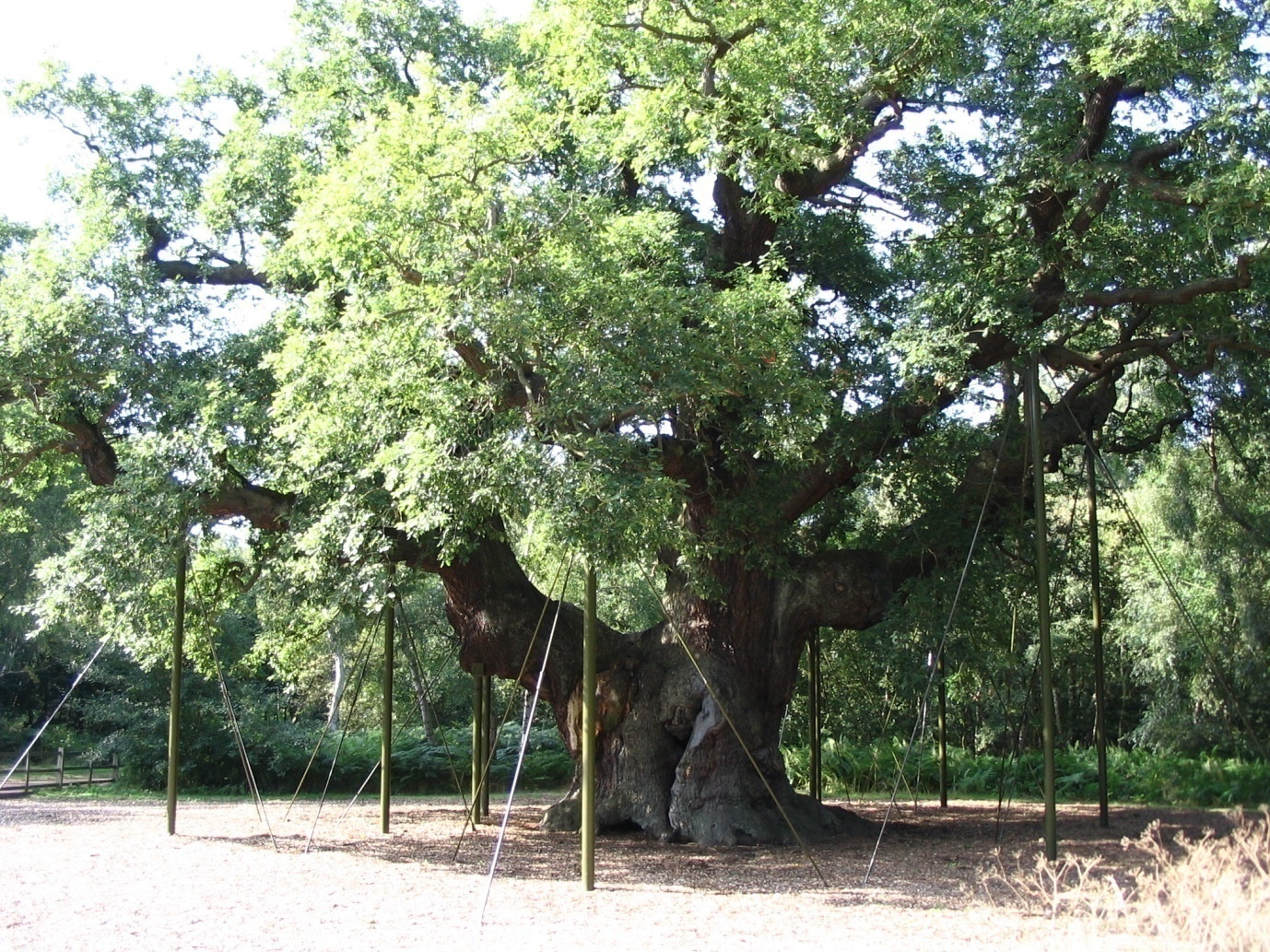
Major Oak aims to win
The famous oak tree that was the reputed hideout of Robin Hood and his merry men has this year been picked as Englands Tree of the Year.
Throughout the next 12 months the oak tree shall take on 13 others from across Europe in a competition dubbed as the Eurovision song contest for trees.
Although the major oak might well be one of the few trees that most people can name, the tree had to fight off stern competition from the likes of the tree which dropped an apple on Sir Isaac Newtons head and the Runnymede yew, where King John signed the Magna Carta.
It is thought that the tree is over 1,000 years old and weighs approximately 23 tonnes.
Sherwood Forest site manager, Izi Banton, spoke to the BBC and said that, it is so impressive to look at and it is doing remarkably well, it still has a full canopy, which is amazing for its age.
Viewed by some to be as stunning as buildings such as Westminster Abbey, records of the tree can be traced back as far as William the Conqueror and is named after historian Major Hayman Rooke, who wrote about the tree in the 18th century.
Last years competition was won by an elm in the Bulgarian town of Sliven after receiving no less than 77,000 votes. Organisers in the Czech Republic say that the winner does not actually have to be the oldest, rarest or even most beautiful tree in the competition.
Contest Co-ordinator, Andrea Kr?pová said:
"We are searching for the most lovable tree, a tree with a story that can bring the community together.
"Trees are in the very heart of the European cultural landscape although they do not always have an easy life there. They deserve our attention and care."
Although England has more trees than other countries in Europe, such as Ireland, Denmark and Switzerland, 2015 is the first year that the country has entered the competition and it is joined by other new entrants including Spain, Belgium and Estonia.
In October of last year, Ladys Tree in Dunkeld was named as the Scottish Tree of the Year and has hosted Lady the Osprey in its branches for the past 24 years, rearing a total of 50 chicks.
Speaking in October, Carol Evans of the Woodland Trust Scotland said:
"Lady's Tree supports a wide range of life, from lichens and wood ants to red squirrels and of course a very famous osprey and it has been at the heart of a conservation success story for nearly quarter of a century.
"It's a very worthy winner, as a Scots pine it is Scotland's national tree and I hope that the nation will give it their vote in European Tree of the Year next February."
Winners of last years European Tree of the year were ranked in the following order:
1st place - The Old Elm (Bulgaria) - 77526 votes
2nd place - The Giant Wild Pear of Gödöll? (Hungary) 36925 votes
3rd place - Wybicki Oak at B?domin (Poland) 16768 votes
4th place - Zechenter´s Garden Oak (Slovakia) 10169 votes
5th place - The Guardian Oak of Vi?ová (Czech Republic) 8211 votes
6th place - The Bonsai Oak in Begard (France) 4989 votes
7th place - Niel Gows Oak (Scotland) - 1740 votes
8th place - The Birr Castle Grey Poplar (Ireland) - 1517 votes
9th place - The Oak at the Gate of the Dead (Wales) - 1093 votes
10th place - The Tree of Perfect Gaiety (Italy) - 689 votes
